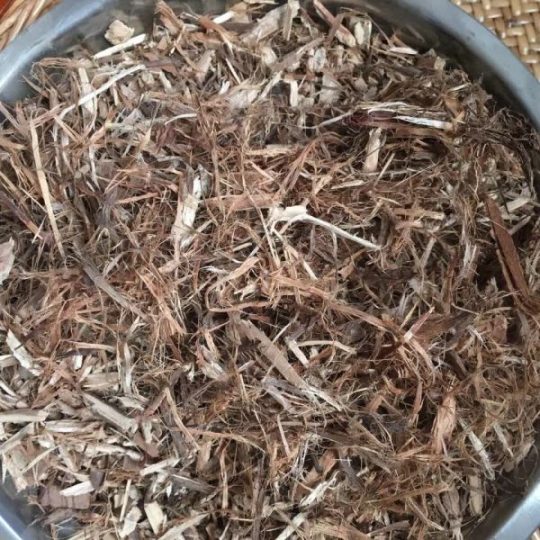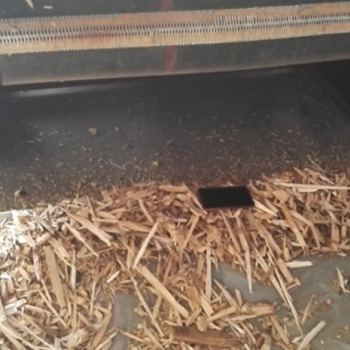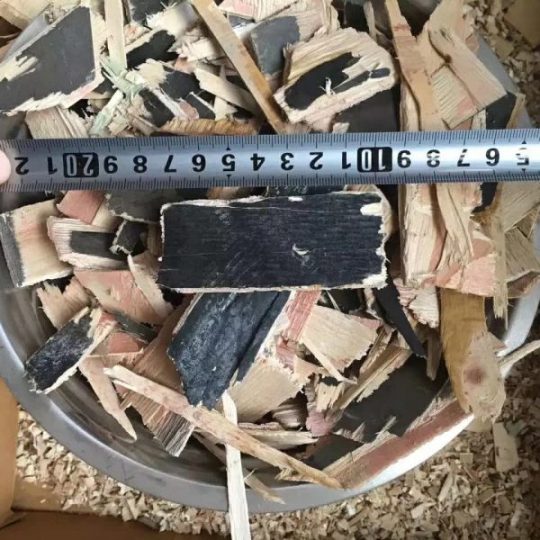#biofuels
Text
The new 'compost obligatoire' rules came into force on 1 January 2024. Here's what they entail.
As of 1 January 2024, organic waste recycling is mandatory in France under new 'compost obligatoire' rules.
With support from the government’s Green Fund, municipalities must provide residents with ways to sort bio-waste, which includes food scraps, vegetable peels, expired food and garden waste.
Households and businesses are required to dispose of organic matter either in a dedicated small bin for home collection or at a municipal collection point. Previously, only those who generated over five tonnes of organic waste per year were required to separate it.
The waste will then be turned into biogas or compost to replace chemical fertilisers. Alternatively, it can be composted at home.
The obligation is currently on local authorities to provide an easy means for households to compost or separate organic waste.
While facilities are rolled out, there will not be fines imposed for non-compliance. It is yet to be seen whether stricter rules will be imposed in future.
One-third of household waste is bio-waste
Organic waste from food and gardens accounts for almost one-third of household waste. When it is mixed with other rubbish, it typically ends up in landfills or incinerators, where it produces heat-trapping greenhouse gases like methane and CO2.
Food waste is responsible for about 16 per cent of the total emissions from the EU food system, according to the European Commission. Globally, food loss and waste generates around 8 per cent of all human-caused emissions annually, the UN says.
It can also contaminate packaging destined for recycling like paper, plastic and glass.
In 2018, only 34 per cent of the EU’s total bio-waste was collected, leaving 40 million tonnes of potential soil nutrients to be discarded, according to NGO Zero Waste Europe.
In France, an estimated 82 kg of compostable waste per person is thrown away each year.
Is bio-waste separation mandatory in other European countries?
Under the EU’s Waste Framework Directive, bio-waste collection is being encouraged this year, but it stops short of setting mandatory targets.
In many European countries, organic waste separation has already been implemented at the municipal level.
Milan in Italy has been running a residential food waste collection programme since 2014. Households were given dedicated bins and compostable bags to kick off the scheme.
Elsewhere, taxes or bans on incinerating bio-waste have encouraged similar schemes, with separate bins and home composting widespread in Austria, the Netherlands and Belgium.
The UK announced plans to roll out separate food waste collection in 2023. It remains voluntary for households in England, but is more strictly enforced in Wales and for business owners.
How to sort your bio-waste
Ideally, all waste - including organic matter - should be kept to a minimum.
This can be achieved through careful meal planning. Consuming, freezing or preserving food before it expires along with using every part of an ingredient also help to reduce waste. Some food waste can even be repurposed into animal feed.
Any food waste that cannot be saved or repurposed should be either composted or separated for collection. This includes uneaten food scraps, baked goods, dairy products, eggshells, fruit and vegetables and their peels, mouldy food, pet food, raw and cooked meat and fish, bones, tea and coffee grounds.
Liquids, non-food products and packaging should not be placed in bio-waste bins.
-via EuroNews.Green, January 2, 2024
#france#composting#eu#european union#organic waste#biofuels#recycling#sustainability#food#food waste#compost#carbon dioxide#carbon emissions#sustainable living#good news#hope
175 notes
·
View notes
Text
When it comes to making fuel from plants, the first step has always been the hardest -- breaking down the plant matter. A new study finds that introducing a simple, renewable chemical to the pretreatment step can finally make next-generation biofuel production both cost-effective and carbon neutral.
For biofuels to compete with petroleum, biorefinery operations must be designed to better utilize lignin. Lignin is one of the main components of plant cell walls. It provides plants with greater structural integrity and resiliency from microbial attacks. However, these natural properties of lignin also make it difficult to extract and utilize from the plant matter, also known as biomass.
"Lignin utilization is the gateway to making what you want out of biomass in the most economical and environmentally friendly way possible," said UC Riverside Associate Research Professor Charles Cai. "Designing a process that can better utilize both the lignin and sugars found in biomass is one of the most exciting technical challenges in this field."
Read more.
21 notes
·
View notes
Text
#good news#environmentalism#environment#science#nature#wood waste#biofuels#sustainability#ireland#waste#waste wood
12 notes
·
View notes
Text
The researchers examined 10 bioenergy cropping systems in an experimental array in Michigan
Annual crops
Simple perennial (multi-year) systems
Diverse perennial systems (reconstructed prairie, successional volunteer vegetation, and a short-rotation coppicing system with poplar trees).
Diverse perennial systems (reconstructed prairie, successional volunteer vegetation, and a short-rotation coppicing system w
Some of them are more productive, but have little conservation value
others, while less productive, have conservation benefits
Crops grown for energy is a likely source of major landscape change in coming decades during the transition from fossil fuels. But farming these crops have
The biodiversity impacts of widespread bioenergy adoption are mostly negative and can be large when they encroach on natural areas.
So, studying different planting methods could reduce the impact on the environment or even benefit biodiversity.
3 notes
·
View notes
Text
Duckweed Power!
There are a number of issues with existing biofuels (usually soybean) - e.g. many crops go to biofuels instead of food, an biofuels are taking up more than 100 million acres of agricultural land.
Duckweed is common in every continent, grows fast and grows in water (including polluted water from animal agriculture - potentially cleaning these waters up a little), which means it doesn't compete with food agriculture for space.
An issue with genetically engineering biofuel plants is that the plants usually produce a lot of fuel at the start, then stop growing completely
A team of scientists, whose research is featured in the article above, have devised a method to allow duckweed to produce 7 times more biofuels. They insert a gene that is inactive into the duckweed, allow the plant to grow fully, before activating that gene for them to produce biofuels.
For more similar articles, see my tag #aslzoology or there's also a link on my blog
#aslzoology#asl zoology#zoology articles#biofuels#studyblr#duckweed#engineering#stem#genetic modification#environment#greta thunberg#climate change#STEM#women in STEM#stemblr
22 notes
·
View notes
Text
Say goodbye to fossil fuels and hello to sustainable energy! 🌱🌞 With the latest advancements in biofuels and bioproducts, we can now transform biomass into clean and renewable energy sources. Let's join forces to build a greener and more sustainable future for all! 🌍
#advancebiofuel#biofuels#bioproducts#sustainability#renewableenergy#cleanenergy#business#energy#india#biodieselinindia#biodieselb100#biofuelassociationofindia#biodieseloil
8 notes
·
View notes
Link
Excerpt from this story from the New York Times:
European lawmakers voted this week to phase out some wood-energy subsidies, a recognition that more than a decade of government incentives has contributed to deforestation without curbing greenhouse gas emissions.
But Wednesday’s vote in the European Parliament leaves key details unsettled and no changes will take place for at least a year. Governments are under tremendous pressure to ease soaring energy prices this winter as Russia cuts its gas supply to Europe.
European governments began subsidizing wood energy more than a decade ago as a way to encourage power plants and homeowners to move away from oil and natural gas. A booming market for wood pellets sprung up. Wood is now Europe’s largest renewable energy source, far ahead of wind and solar.
The vote shows how dramatically political opinions of wood have shifted since last year, when government figures revealed that burning wood in the European Union released more carbon dioxide than would have been emitted had that energy come from fossil fuels.
“The writing is on the wall: Cutting down forests for energy use is neither sustainable, nor does it help with our energy independence,” said Tiemo Woelken, a German member of the European Parliament who supported ending the subsidies.
More than half of the wood harvested in Europe is burned for heat or electricity. This energy helps countries reach their renewable energy targets, since wood is renewable because trees ultimately grow back.
10 notes
·
View notes
Link
Warm invitation to attend a Conference on Biodiesel 2022 all through Oct. 31-Nov. 01, 2022 in Rome, Italy
#biodiesel#biofuels#bioenergy#biomass#green energy#renewable ener#environment#conference#researcher#event#rome#italy
2 notes
·
View notes
Text
The global Solid Biomass Feedstock Market is expected to reach USD 36.2 billion by 2029 from USD 26.6 billion in 2024 at a CAGR of 6.3% during the forecast period according to a new report by MarketsandMarkets™. Solid biomass feedstock refers to organic materials which are in solid state sourced from different sources such as agriculture, forestry, and organic waste, which can be utilized for energy production via combustion, gasification, or other conversion methods. These resources, are renewable and easily accessible, rendering them crucial for generating heat, electricity, and biofuels. Solid biomass feedstock serves as a cornerstone in the shift toward sustainable energy systems, providing a carbon-neutral substitute for fossil fuels and mitigating greenhouse gas emissions.
#Solid Biomass Feedstock#Solid Biomass Feedstock Market#biomass#biomethane#bioenergy#biofuels#biorefinery#biofuel#biomass energy#Biomass Feedstock#biomass power generation market#energy#energia#power generation#utilities#power#utility#electricity#renewable power#renewableenergy#renewable resources#biomass gasification
0 notes
Text
Efficient Biomass Crusher Machine for Wood Waste
Zibo Chenze Machinery proudly presents our patented Biomass Crusher Machine, designed to efficiently crush various biomass materials such as old pallets, plywood waste, branches, leaves, corn stalks, and more. With its innovative design, this biomass crusher offers enhanced durability, simplified structure, and improved operational efficiency.
Key Features:
Simple Structure:
The machine features a simple yet robust structure for easy operation and maintenance.
Efficient crushing of biomass materials for diverse applications.
Hammer Knives vs Fly Knives:
Utilizes hammer knives, providing an extended lifespan compared to traditional fly knives.
Eliminates the need for frequent grinding, resulting in increased machine efficiency.
Nail and Iron Handling:
Ideal for processing materials with nails and iron, such as old pallets.
Prevents damage to knives and enhances machine capacity.
Iron Moving Equipment:
Optional iron moving equipment is available to efficiently remove nails from the output discharge conveyor.
Ensures convenient handling of wood chips, free from metal impurities.
Crushing Operation:
This biomass crusher operates on impact energy to effectively crush materials. Here’s how it works:
The high-speed rotor, equipped with hammer-type knives, is driven by a powerful motor.
Biomass materials are fed into the crusher, and the high-speed rotor impacts, shears, and tears them apart.
The gravity action of the wood causes it to impact the baffle plate and screen bar in the frame body.
A sieve plate is positioned at the lower part of the rotor, allowing particles smaller than the screen holes to be discharged.
Larger wood pieces are prevented from remaining on the sieve plate, ensuring continuous crushing by the hammer.
Explore our complete range of wood processing and biomass solutions.
Crusher Effect

old palltes chips 20-30mm

Dry tree bark chips 30mm

pallets waste chips 50mm

oil plam tree chips 20-30mm

pallet chips testing

plywood waste chips 50-100mmSEND ENQUIRY
0 notes
Text
Boeing to purchase 9.4 million gallons of SAF
KLM Boeing powered by biofuel
Boeing is buying 9.4 million gallons (35.6 million liters) of blended sustainable aviation fuel (SAF) to support its 2024 U.S. commercial operations, reducing its carbon emissions and working to help grow the supply of the fuel globally. This is the company’s largest annual SAF purchase, more than 60% higher than its buy in 2023. The blended fuel – 30% SAF made from…

View On WordPress
0 notes
Text

Researcher offers increased understanding of corrosion in lime kilns fired with biofuel
To reduce carbon dioxide emissions from lime kilns, there is a growing interest in introducing bio-based fuels as an alternative to fossil fuels. Naresh Kumar Wagri, Department of Applied Physics and Electronics, Umeå University, shows in his thesis that this presents challenges due to the different chemical and physical properties of biofuels.
"The infiltration of ash slag that settles in the protective inner walls of the furnace is more extensive from biomass fuel than from coal fuel due to the different chemistry of the fuels," he explains.
In industrial furnaces, boilers and incinerators where high temperature processes take place, an internal shell is needed to protect against the high temperatures and chemical attack. These linings are usually made from bricks of ceramic materials that can withstand high temperatures. Typical industries where these refractory liners are used are in metallurgy, quicklime production, cement production, glass production and the petroleum and energy sectors.
Read more.
#Materials Science#Science#Biofuels#Corrosion#Ash#Materials processing#Limestone#Umea University#Biomaterials
6 notes
·
View notes
Text


Products are getting better and better. How do you think?
#CEKG#Bioreactor#bioprocessing#upstream#VirusVaccines#AdenovirusVector#Protein-based#Vaccines#VLP#biotechnology#biotechindustry#biodefence#biofuels#biological#biopharmaceuticals
1 note
·
View note
Text
Algae Products Market by Type (Hydrocolloids, Algal Protein, Lipids, Carotenoids), Source (Seaweed, Microalgae {Chlorella, Spirulina}), Form (Dry, Liquid), Application (Food & Beverage, Nutraceuticals, Cosmetic), and Geography - Global Forecast to 2030
#Algae Products Market#Algae Products#algae#biofuels#biomass#food#food and nutrition#food industry#nutrition
0 notes
Text
University of Alberta Joins Transatlantic Network to Accelerate Tech Innovation - Technology Org
New Post has been published on https://thedigitalinsider.com/university-of-alberta-joins-transatlantic-network-to-accelerate-tech-innovation-technology-org/
University of Alberta Joins Transatlantic Network to Accelerate Tech Innovation - Technology Org
The University of Alberta has joined a transatlantic network bringing together the best and brightest researchers, startups and technology companies from countries allied under the banner of the North Atlantic Treaty Organization (NATO).
The U of A is lending expertise, infrastructure and partnerships as a test centre where innovators and researchers affiliated with the NATO DIANA network can assess and refine new technologies. Image credit: Richard Siemens/University of Alberta
The network, called the Defence Innovation Accelerator for the North Atlantic (DIANA), supports the development and testing of technologies with both civilian and military applications in a collaborative effort to help solve challenges affecting security and peace worldwide.
According to an announcement this morning by NATO, the U of A is among 13 test centres and two accelerators in Canada that were added to NATO DIANA’s growing roster of partners.
“Part of DIANA’s strength is our unique transatlantic network of talent centres and innovation leaders working toward a common purpose,” says Prof. Deeph Chana, managing director of DIANA. “The breadth and diversity of partners in DIANA’s network will accelerate the development and deployment of groundbreaking solutions for defence, security and peace.”
“This is a security and defence platform, but the bigger picture here is the dual-use technologies that will be developed to support Canada, Canadian citizens and the broader society,” explains André McDonald, professor in the Faculty of Engineering and associate vice-president (strategic research initiatives and performance), who led the U of A’s successful bid to join DIANA with input from researchers across the university’s three colleges.
“This is about using deep tech research and innovation to answer challenges and support society across areas like advanced manufacturing, artificial intelligence and human enhancement.”
As part of the NATO DIANA network of test centres where innovators can assess and refine their technologies, the U of A will contribute world-leading expertise, infrastructure and existing partnerships.
McDonald notes that the network’s interests in dual-use technologies dovetail with objectives outlined in Shape, the university’s strategic plan of impact, and in Forward with Purpose, its strategic plan for research and innovation. In particular, NATO DIANA’s focus areas for research align with the U of A’s strengths in energy solutions, nano-scale fabrication, artificial intelligence, space science, quantum research and biotechnology.
“With technologies like hydrogen fuel cells and biofuels, we can take the technology back into the civilian marketplace. Biotechnology can support human enhancement and the betterment of citizens in their daily lives, by creating things like brain-computer interfaces or bionic limb attachments for people with disabilities. New materials and fabrics that protect the wearer in extreme conditions are as useful for industry as for the military. And AI integrated into autonomous systems, big data science, nanosatellites and next-gen wireless communications could have applications for people living in northern and Indigenous communities. It’s a brilliant partnership across the board.”
Being part of NATO DIANA will also mean more learning opportunities for U of A undergraduates, graduate students and postdoctoral researchers, which aligns with the objectives of the university’s new Student Experience Action Plan, says McDonald.
“The goal is to build our capacity to support training students through experiential learning, work-integrated learning and industry partnerships within our research and innovation ecosystem. This expands that capacity.”
Source: University of Alberta
You can offer your link to a page which is relevant to the topic of this post.
#accelerators#ai#applications#artificial#Artificial Intelligence#autonomous systems#Big Data#biofuels#biotechnology#board#Brain#Brain-computer interfaces#Canada#Cells#collaborative#colleges#communications#Companies#computer#data#data science#deployment#development#Disabilities#diversity#energy#engineering#Fabrication#Faculty#fuel
0 notes